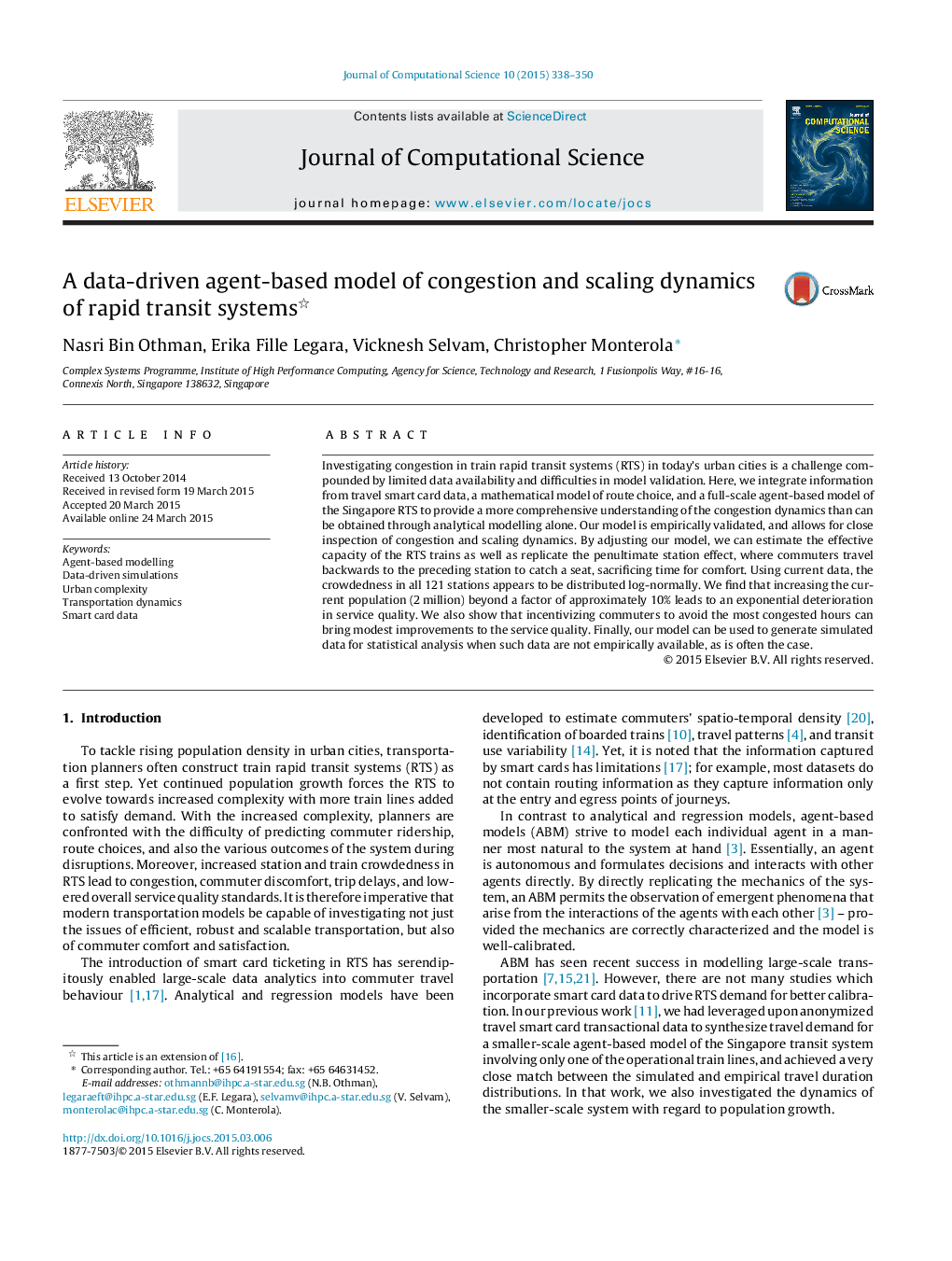| کد مقاله | کد نشریه | سال انتشار | مقاله انگلیسی | نسخه تمام متن |
|---|---|---|---|---|
| 430363 | 687965 | 2015 | 13 صفحه PDF | دانلود رایگان |
• Develop a full-scale data-driven agent-based model (ABM) of rapid train system (RTS).
• Model integrates a route choice model and results are validated using smart card data.
• Analyze congestion and scaling dynamics of RTS using the developed ABM.
• Propose a procedure that captures the penultimate station effect in RTS.
Investigating congestion in train rapid transit systems (RTS) in today's urban cities is a challenge compounded by limited data availability and difficulties in model validation. Here, we integrate information from travel smart card data, a mathematical model of route choice, and a full-scale agent-based model of the Singapore RTS to provide a more comprehensive understanding of the congestion dynamics than can be obtained through analytical modelling alone. Our model is empirically validated, and allows for close inspection of congestion and scaling dynamics. By adjusting our model, we can estimate the effective capacity of the RTS trains as well as replicate the penultimate station effect, where commuters travel backwards to the preceding station to catch a seat, sacrificing time for comfort. Using current data, the crowdedness in all 121 stations appears to be distributed log-normally. We find that increasing the current population (2 million) beyond a factor of approximately 10% leads to an exponential deterioration in service quality. We also show that incentivizing commuters to avoid the most congested hours can bring modest improvements to the service quality. Finally, our model can be used to generate simulated data for statistical analysis when such data are not empirically available, as is often the case.
Journal: Journal of Computational Science - Volume 10, September 2015, Pages 338–350
